The Cost of Tariff Chaos
Fear and Uncertainty About Trump's Tariffs are Already Having Negative Effects on the Economy
Thanks for reading! If you haven’t subscribed, please click the button below:
By subscribing you’ll join over 60,000 people who read Apricitas!
This afternoon, Donald Trump is set to implement possibly the single-largest tariff hike in modern American history—and we know functionally zero details about it. Reporting indicates the White House team was still cooking up possible options for the president as late as yesterday, with basic information like the tariff rates and countries affected still up in the air. These tariffs will supposedly go into effect “immediately”, likely having the same midnight-on-April 3rd implementation date as Trump’s automobile tariffs, thus leaving businesses zero time to digest the information and formally prepare. This chaotic approach has sent measures of trade policy uncertainty skyrocketing to record high levels—and that alone imposes significant economic costs by making spending, investment, hiring, and transport decisions harder.
Indeed, unclear and belligerent trade policy has already terrified American consumers, who are increasingly scared about tariffs’ impact on prices and the wider economy. Inflation expectations have risen dramatically in the University of Michigan’s national survey, with long-run expectations jumping to the highest levels in more than 30 years. Variance in inflation expectations has also skyrocketed, underscoring the profound uncertainty most people have about the near future. A record high share of respondents are complaining about government economic policy, mostly citing the negative impact of tariffs, and a record high share are also expecting business conditions to get worse over the next year. Survey data from The Conference Board showed households’ forward-looking economic expectations at a 12-year low, and most Americans are now planning to cut back on vacations and other leisure spending.
The one place consumers aren’t cutting back is in durable goods—in fact, it is here where Americans are rushing out to buy things before tariffs go into place. The share of consumers saying you should make large purchases now because prices will go up soon has jumped since the election, and those with the means to do are trying to stockpile what they can. The car industry has been one of the sectors most affected by the rush to get ahead of tariffs, with US vehicle sales jumping 12.7% in March as Trump announced universal 25% tariffs on motor vehicles & parts.
Consumers and businesses alike have also rushed to import goods before Trump imposes more tariffs, sending the US goods trade deficit skyrocketing. Much of that deficit surge is composed of a massive increase in gold imports from financiers, but it also includes a significant rise in imports of consumer goods (up 24% from this time last year) and capital goods (up 18%). In January, imports of computers were up 57% from last year and imports of phones were up 33%. This panic buying certainly continued through March, and given the continued tariff back-and-forth will also likely extend into April.
Behind closed doors in Congress, Treasury Secretary Bessent reportedly claimed today’s tariffs are a “cap” and that rates would only go lower, not higher, from there. Yet that is a cold comfort given how high tariff rates are likely to go—and also difficult to believe given that Trump likes escalatory tariff retaliation cycles, has promised further tariffs on key sectors like lumber, copper, pharmaceuticals, or semiconductors, and keeps threatening more tariffs like those on buyers of Russian, Iranian, or Venezuelan oil. Even if it is a cap, elevated uncertainty could persist for an extended period as exclusions and reductions are added on a country-by-country or product-by-product basis. This maximum-attention and maximum-uncertainty approach is likely to continue—and it is certain to amplify the negative costs of the tariffs Trump is implementing today.
The Business End of Uncertainty
Economic optimism among businesses both big and small has been falling for months as Trump’s tariff ambitions grow. Among CFOs surveyed by the Richmond Federal Reserve, 30.5% named tariffs as a pressing concern in Q1, up from only 8.3% at the end of last year, and concerns about uncertainty doubled over the same timeframe. The shift in trade policy is also by far-and-away Trump’s least popular move among businesses, with a sizeable share of CFOs now saying changes in tariffs have caused them to cut their hiring and investment plans. Small businesses, too, are growing increasingly worried, with 64% of them now expecting to be negatively impacted by tariffs and only 8% expecting to be positively impacted.
One of the most robust measures of business inflation expectations also shows rising uncertainty and cost concerns among American companies. The Atlanta Fed asks companies to project their own unit costs forward, and since businesses intimately know their input prices and make decisions based on them, this tends to be a more reliable way of forecasting prices than just asking people for their general inflation expectations. Through February, the Atlanta Fed’s data shows inflation expectations and uncertainty had both risen as tariff threats escalated. Perhaps most importantly, inflation expectations are diverging from experienced inflation for the first time since the early pandemic—the threat of tariffs has loomed so large that companies see current price relief as illusory and expect costs to reaccelerate soon.
The Dallas Fed’s survey of Texas manufacturers gives a more up-to-date glimpse at similar dynamics. These businesses, deeply intertwined with foreign supply chains in Mexico and beyond, have become incredibly frustrated by the administration’s constantly-shifting trade policy. They now expect faster cost inflation, worse business conditions, and slower investment growth than at the start of the year. More than half of the comments left on the survey vented about the negative impacts of tariffs.
Business uncertainty among Texas manufacturers is also rising at the highest rate since early COVID, with companies growing increasingly unsure of even their more-pessimistic economic outlook. One executive at a Texas computer manufacturing company put it succinctly: “how can you do business planning with all of this uncertainty and the daily changes in direction made by the Trump administration?”
Conclusions
Today’s tariffs will be bad enough on their own, but had they been passed as a legislative package you could at least rest easy knowing the matter was settled for the time being. Instead, they’ll remain continually subject to change by the President while setting off a chain of retaliation and renegotiation that will keep global trade policy in flux for weeks or months. Any eventual resolution will also stand on shaky ground—Trump has repeatedly shown his willingness to violate formal free trade agreements, including those he has personally signed, so businesses and foreign countries will never 100% trust that his trade war ambitions are complete. The pervasive uncertainty that has undermined the economy over the last few months will increase before it decreases.

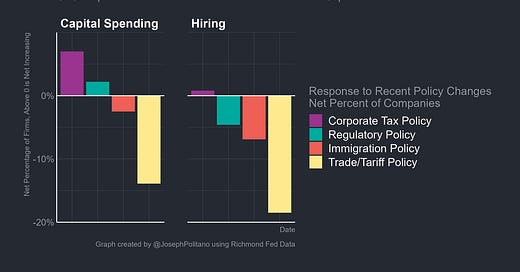



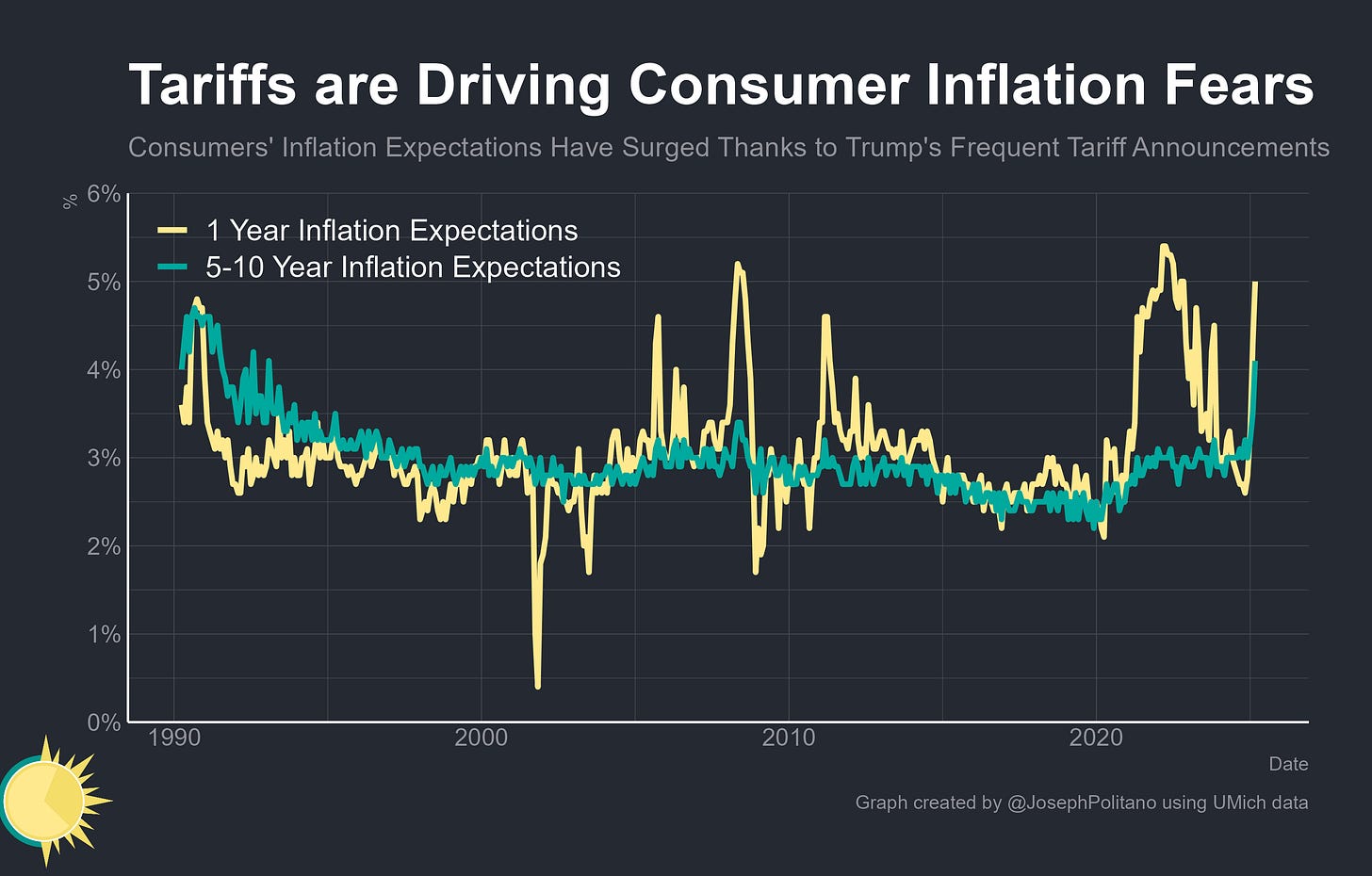
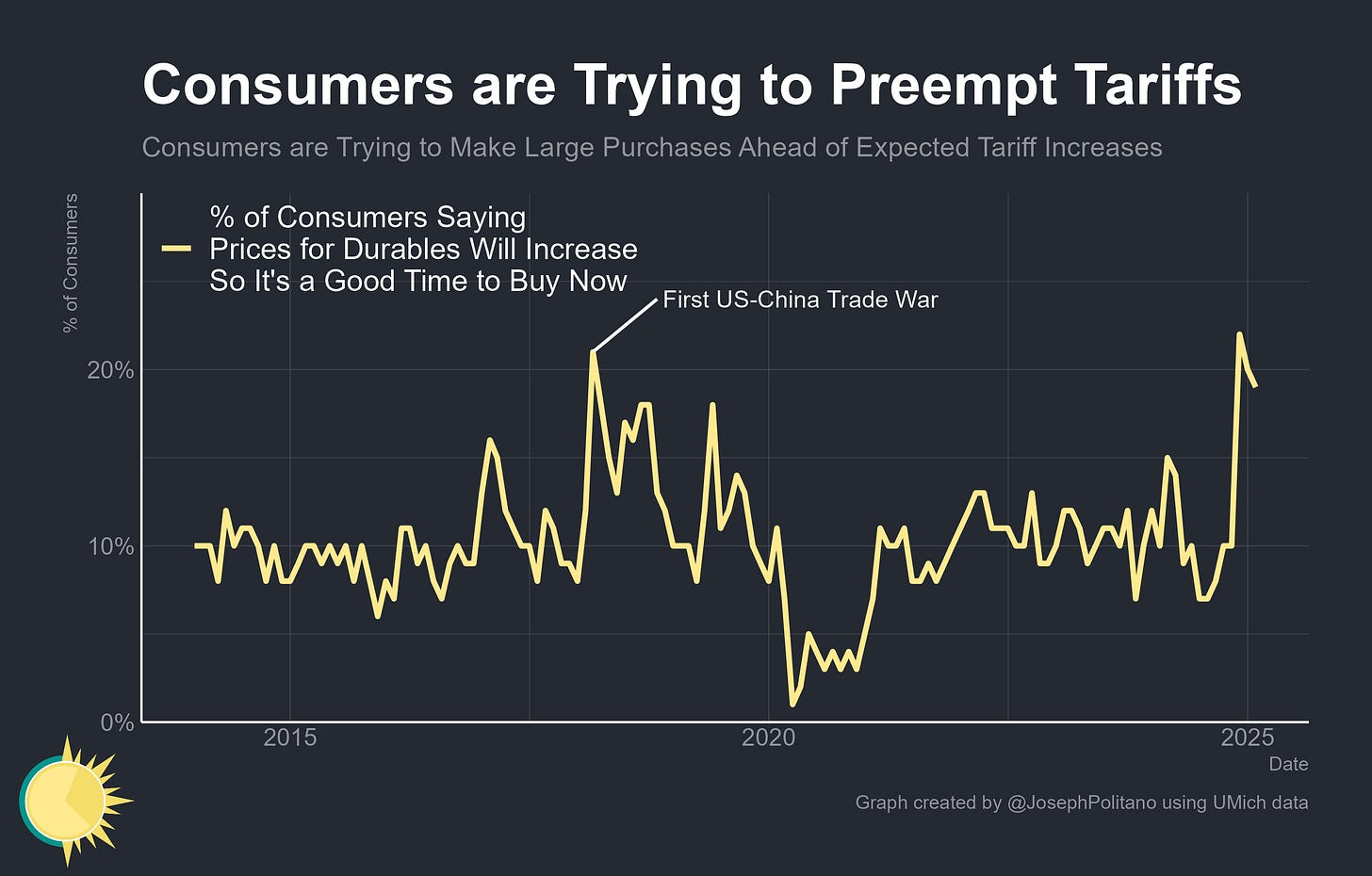
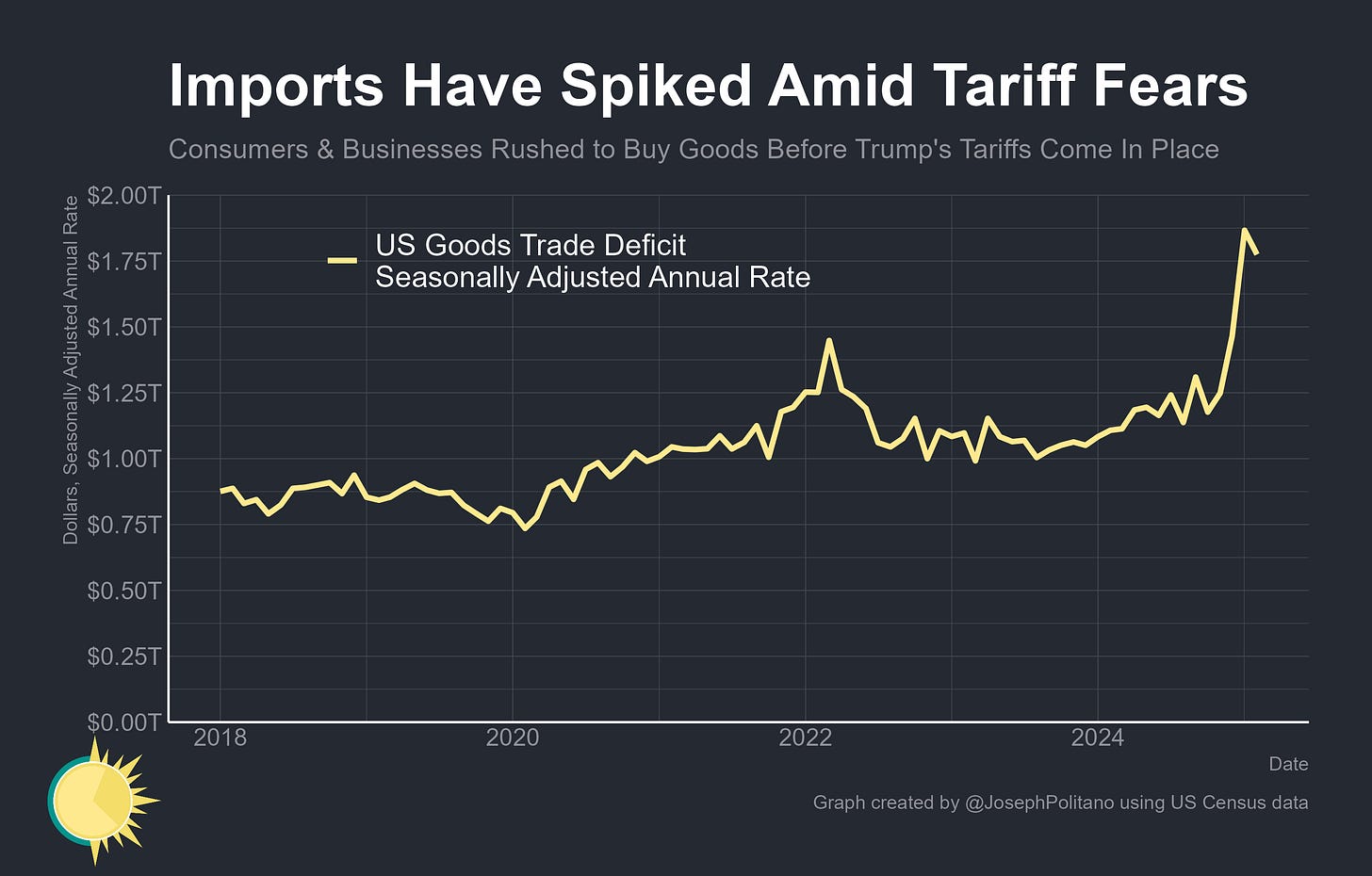

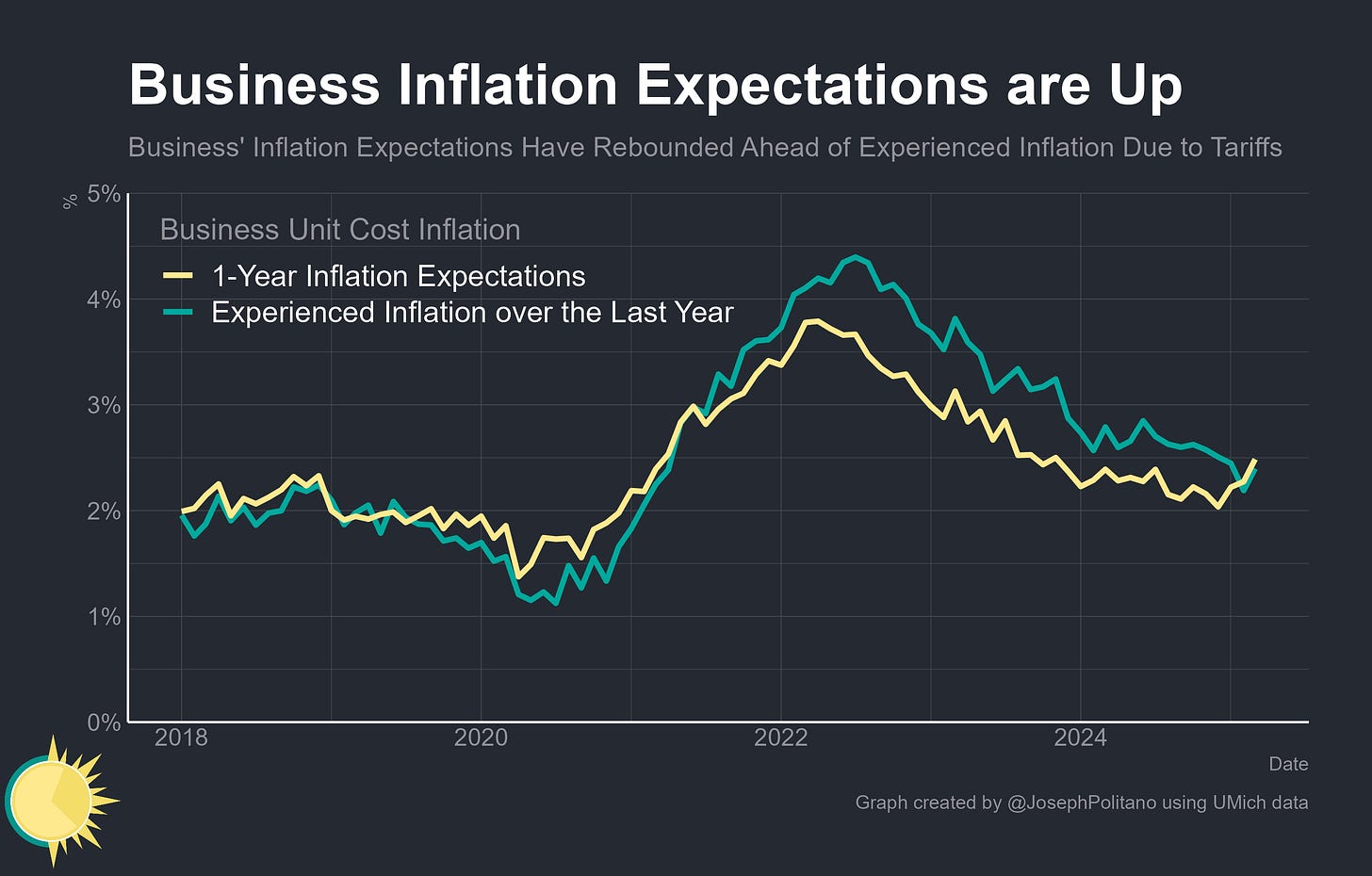
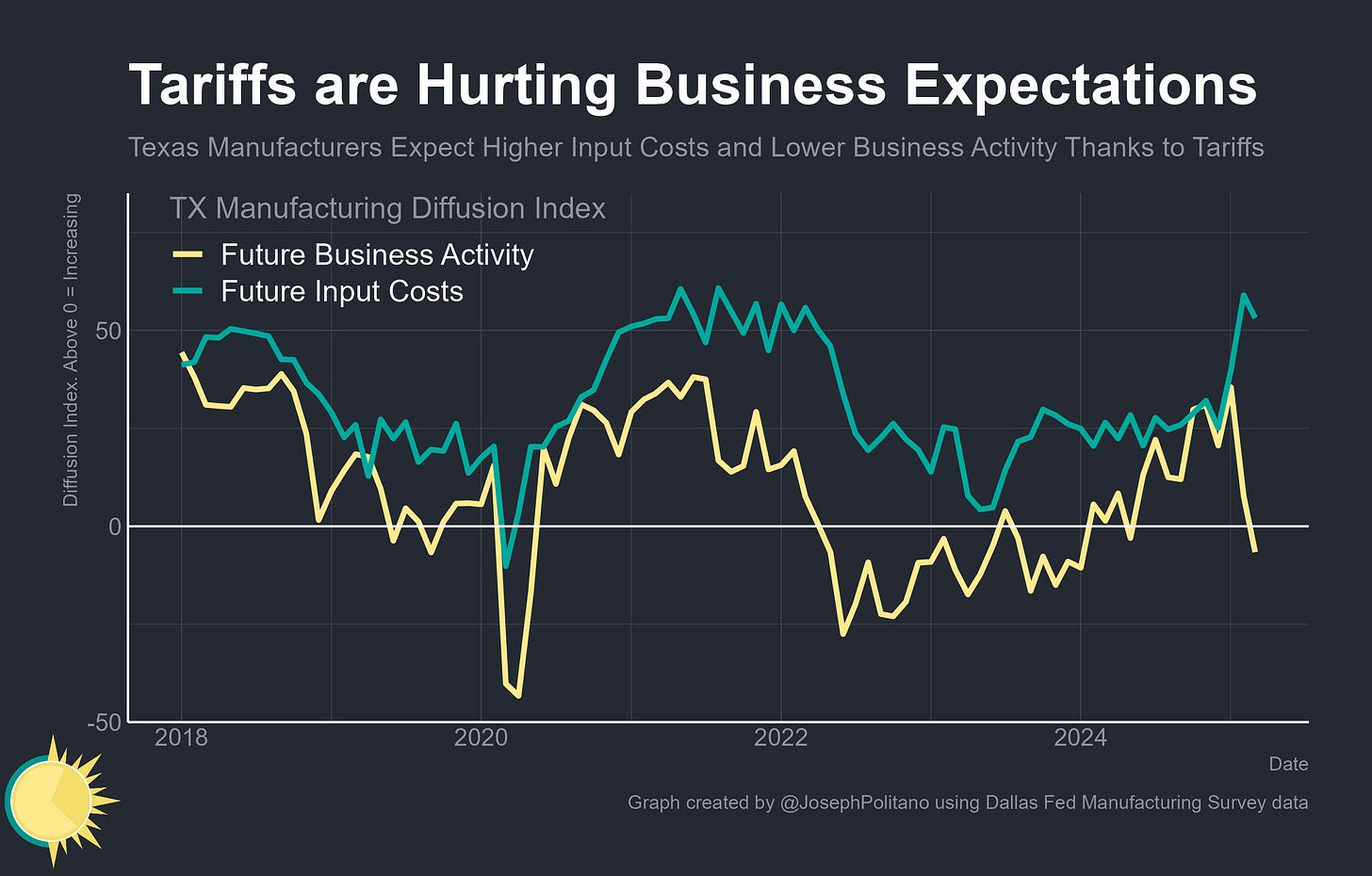
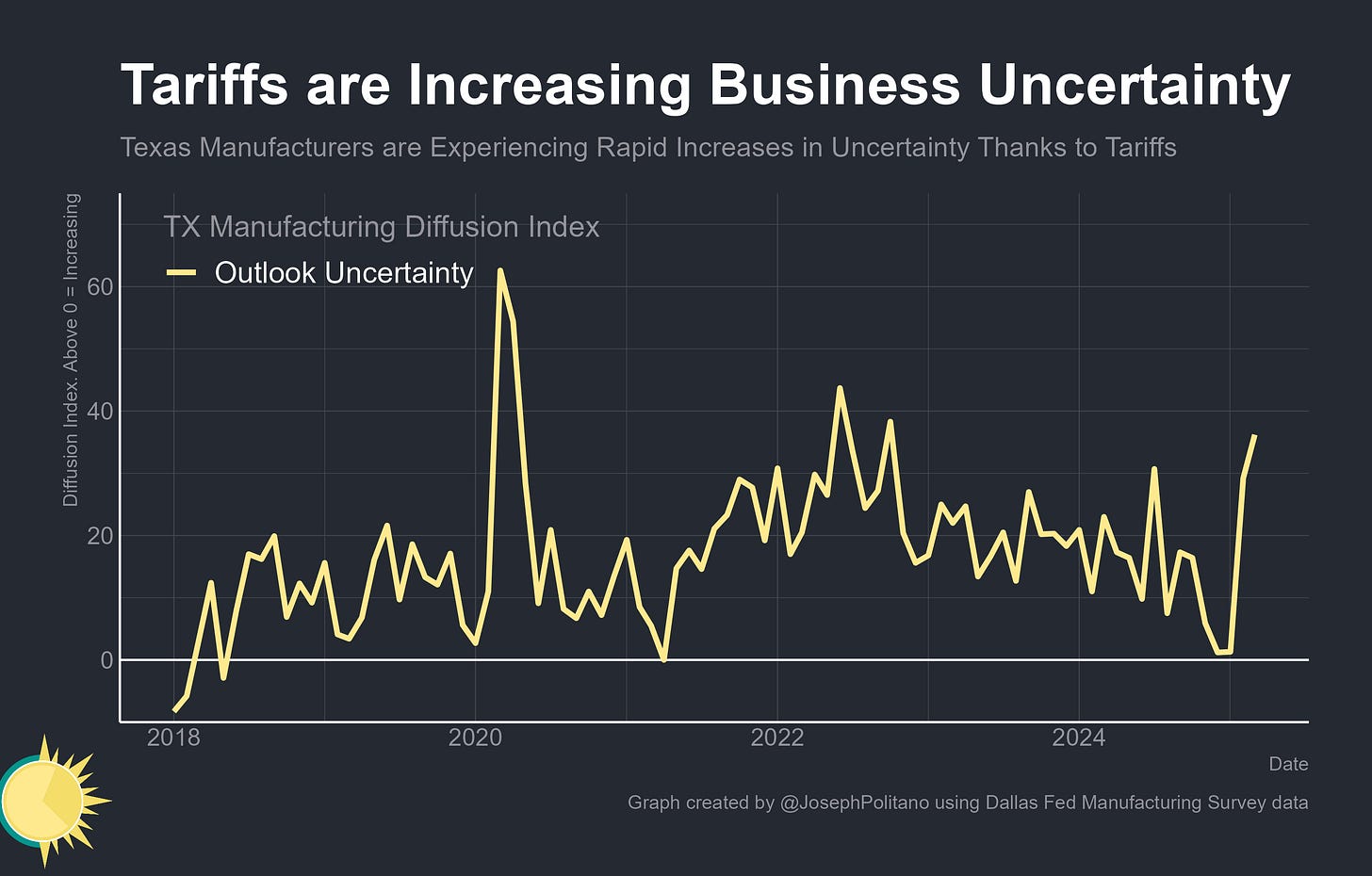
Clown Show.
People hate uncertainty. Relax. It’ll blow over. Certainly better than a country run by a shadowy cabal who hates fair skinned, straight or male citizens. Listen to the second halves of the Bessent and Lutnick All In podcasts to get the whole picture. Tariffs are just a part of it.